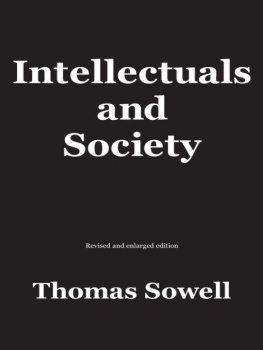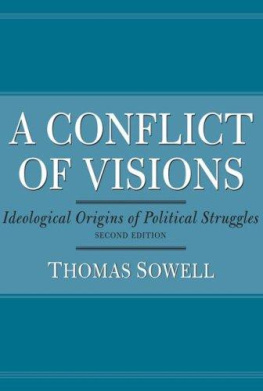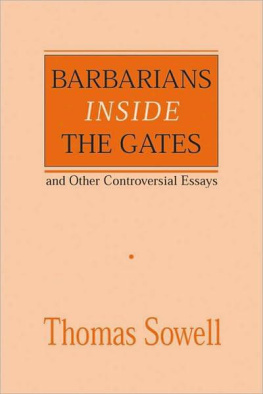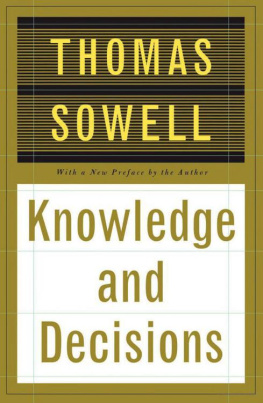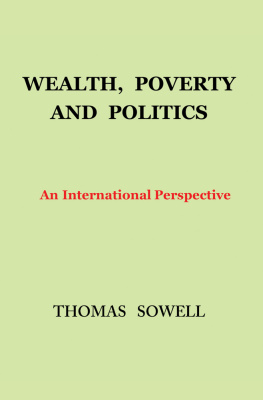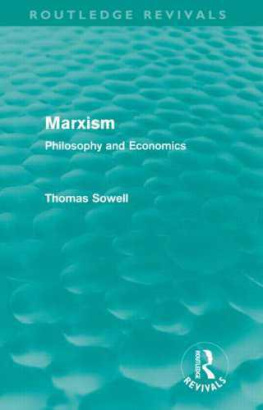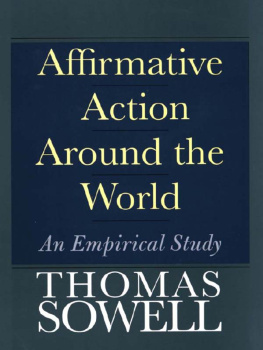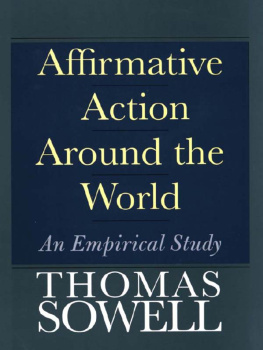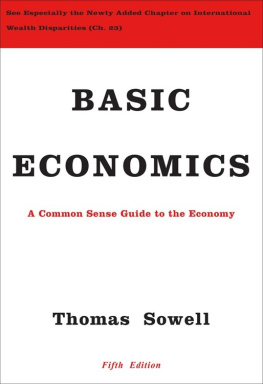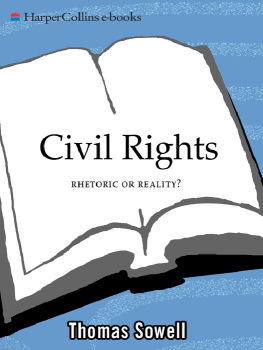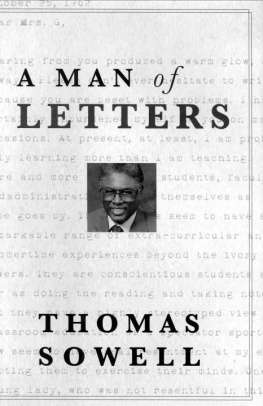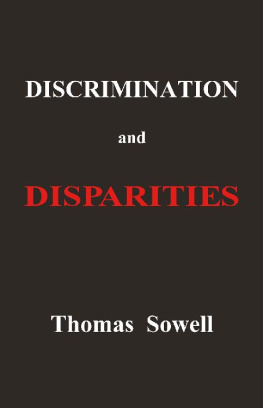Thomas Sowell - Trickle Down Theory and Tax Cuts for the Rich
Here you can read online Thomas Sowell - Trickle Down Theory and Tax Cuts for the Rich full text of the book (entire story) in english for free. Download pdf and epub, get meaning, cover and reviews about this ebook. year: 2012, publisher: Hoover Institution Press, genre: Politics. Description of the work, (preface) as well as reviews are available. Best literature library LitArk.com created for fans of good reading and offers a wide selection of genres:
Romance novel
Science fiction
Adventure
Detective
Science
History
Home and family
Prose
Art
Politics
Computer
Non-fiction
Religion
Business
Children
Humor
Choose a favorite category and find really read worthwhile books. Enjoy immersion in the world of imagination, feel the emotions of the characters or learn something new for yourself, make an fascinating discovery.

- Book:Trickle Down Theory and Tax Cuts for the Rich
- Author:
- Publisher:Hoover Institution Press
- Genre:
- Year:2012
- Rating:5 / 5
- Favourites:Add to favourites
- Your mark:
- 100
- 1
- 2
- 3
- 4
- 5
Trickle Down Theory and Tax Cuts for the Rich: summary, description and annotation
We offer to read an annotation, description, summary or preface (depends on what the author of the book "Trickle Down Theory and Tax Cuts for the Rich" wrote himself). If you haven't found the necessary information about the book — write in the comments, we will try to find it.
Trickle Down Theory and Tax Cuts for the Rich — read online for free the complete book (whole text) full work
Below is the text of the book, divided by pages. System saving the place of the last page read, allows you to conveniently read the book "Trickle Down Theory and Tax Cuts for the Rich" online for free, without having to search again every time where you left off. Put a bookmark, and you can go to the page where you finished reading at any time.
Font size:
Interval:
Bookmark:

Trickle Down
Theory
and
Tax Cuts for
the Rich
Thomas Sowell
H O O V E R I N S T I T U T I O N P R E S S
STANFORD UNIVERSITY STANFORD, CALIFORNIA

The Hoover Institution on War, Revolution and Peace, founded at Stanford University in 1919 by Herbert Hoover, who went on to become the thirty-first president of the United States, is an interdisciplinary research center for advanced study on domestic and international affairs. The views expressed in its publications are entirely those of the authors and do not necessarily reflect the views of the staff, officers, or Board of Overseers of the Hoover Institution.
www.hoover.org
Hoover Institution Press Publication No. 635
Hoover Institution at Leland Stanford Junior University,
Stanford, California 94305-6010
Copyright 2012 by Thomas Sowell
All rights reserved. No part of this publication may be reproduced, stored in a retrieval system, or transmitted in any form or by any means, electronic, mechanical, photocopying, recording, or otherwise, without written permission of the publisher and copyright holders.
First printing 2012
Manufactured in the United States of America
Cataloging-in-Publication Data is available from the Library of Congress.
ISBN: 978-0-8179-1615-2 (pbk. : alk. paper)
ISBN: 978-0-8179-1616-9 (e-book)
CONTENTS
We figh t for and against not men and things as they are, but for and against the caricatures we make of them.
J.A. Schumpeter []
At various times and places, particular individuals have argued that existing tax rates are so high that the government could collect more tax revenues if it lowered those tax rates, because the changed incentives would lead to more economic activity, resulting in more tax revenues out of rising incomes, even though the tax rate was lowered. This is clearly a testable hypothesis that people might argue for or against, on either empirical or analytical grounds. But that is seldom what happens.
Even when the particular tax cut proposal is to cut tax rates in all income brackets, including reducing tax rates by a higher percentage in the lower income brackets than in the upper income brackets, such proposals have nevertheless often been characterized by their opponents as tax cuts for the rich because the total amount of money saved by someone in the upper income brackets is often larger than the total amount of money saved by someone in the lower brackets. Moreover, the reasons for proposing such tax cuts are often verbally transformed from those of the advocates namely, changing economic behavior in ways that generate more output, income and resulting higher tax revenues to a very different theory attributed to the advocates by the opponents, namely the trickle-down theory.
No such theory has been found in even the most voluminous and learned histories of economic theories, including J.A. Schumpeters monumental 1,260-page History of Economic Analysis . Yet this non-existent theory [] It is a classic example of arguing against a caricature instead of confronting the argument actually made.
While arguments for cuts in high tax rates have often been made by free-market economists or by conservatives in the American sense, such arguments have also sometimes been made by people who were neither, including John Maynard Keynes [] But the claim that these are tax cuts for the rich, based on a trickle-down theory also has a long pedigree.
President Franklin D. Roosevelts speech writer Samuel Rosenman referred to the philosophy that had prevailed in Washington since 1921, that the object of government was to provide prosperity for those who lived and worked at the top of the economic pyramid, in the belief that prosperity would trickle down to the bottom of the heap and benefit all. []
When Samuel Rosenman referred to what had been happening since 1921, he was referring to the series of tax rate reductions advocated by Secretary of the Treasury Andrew Mellon, and enacted into law by Congress during the decade of the 1920s. But the actual arguments advocated by Secretary Mellon had nothing to do with a trickle-down theory. Mellon pointed out that, under the high income tax rates at the end of the Woodrow Wilson administration in 1921, vast sums of money had been put into tax shelters such as tax-exempt municipal bonds, instead of being invested in the private economy, where this money would create more output, incomes and jobs. [] It was an argument that would be made at various times over the years by others and repeatedly evaded by attacks on a trickle-down theory found only in the rhetoric of opponents.
What actually followed the cuts in tax rates in the 1920s were rising output, rising employment to produce that output, rising incomes as a result and rising tax revenues for the government because of the rising incomes, even though the tax rates had been lowered. Another consequence was that people in higher income brackets not only paid a larger total amount of taxes, but a higher percentage of all taxes, after what have been called tax cuts for the rich. There were somewhat similar results in later years after high tax rates were cut during the John F. Kennedy, Ronald Reagan and George W. Bush administrations. [] After the 1920s tax cuts, it was not simply that investors incomes rose but that this was now taxable income, since the lower tax rates made it profitable for investors to get higher returns by investing outside of tax shelters.
The facts are unmistakably plain, for those who bother to check the facts. In 1921, when the tax rate on people making over $100,000 a year was 73 percent, the federal government collected a little over $700 million in income taxes, of which 30 percent was paid by those making over $100,000. By 1929, after a series of tax rate reductions had cut the tax rate to 24 percent on those making over $100,000, the federal government collected more than a billion dollars in income taxes, of which 65 percent was collected from those making over $100,000. []
There is nothing mysterious about this. Under the sharply rising tax rates during the Woodrow Wilson administration, to pay for the First World War, fewer and fewer people reported high taxable incomes, whether by putting their money into tax-exempt securities or by any of the other ways of rearranging their financial affairs to minimize their tax liability. Under these escalating wartime income tax rates, the number of people reporting taxable incomes of more than $300,000 a huge sum in the money of that era declined from well over a thousand in 1916 to fewer than three hundred in 1921. The total amount of taxable income earned by people making over $300,000 declined by more than four-fifths during those years. [] but considerable reason to believe that they were receiving tax-exempt incomes that did not have to be reported under existing laws at that time.
By the Treasury Departments estimate, the money invested in tax-exempt securities had nearly tripled in a decade. [] In short, these were sums of money with great potential impact on the economy, depending on where they were invested.
Andrew Mellon pointed out that the man of large income has tended more and more to invest his capital in such a way that the tax collector cannot reach it. []
Secretary Mellon repeatedly sought to get Congress to end tax-exemptions for municipal bonds and other securities, []
Congress, however, refused to put an end to tax-exempt securities. [] Secretary Mellon sought to reduce the incentives for investors to divert their money from productive investments in the economy to putting it into safe havens in these tax shelters:
Next pageFont size:
Interval:
Bookmark:
Similar books «Trickle Down Theory and Tax Cuts for the Rich»
Look at similar books to Trickle Down Theory and Tax Cuts for the Rich. We have selected literature similar in name and meaning in the hope of providing readers with more options to find new, interesting, not yet read works.
Discussion, reviews of the book Trickle Down Theory and Tax Cuts for the Rich and just readers' own opinions. Leave your comments, write what you think about the work, its meaning or the main characters. Specify what exactly you liked and what you didn't like, and why you think so.

